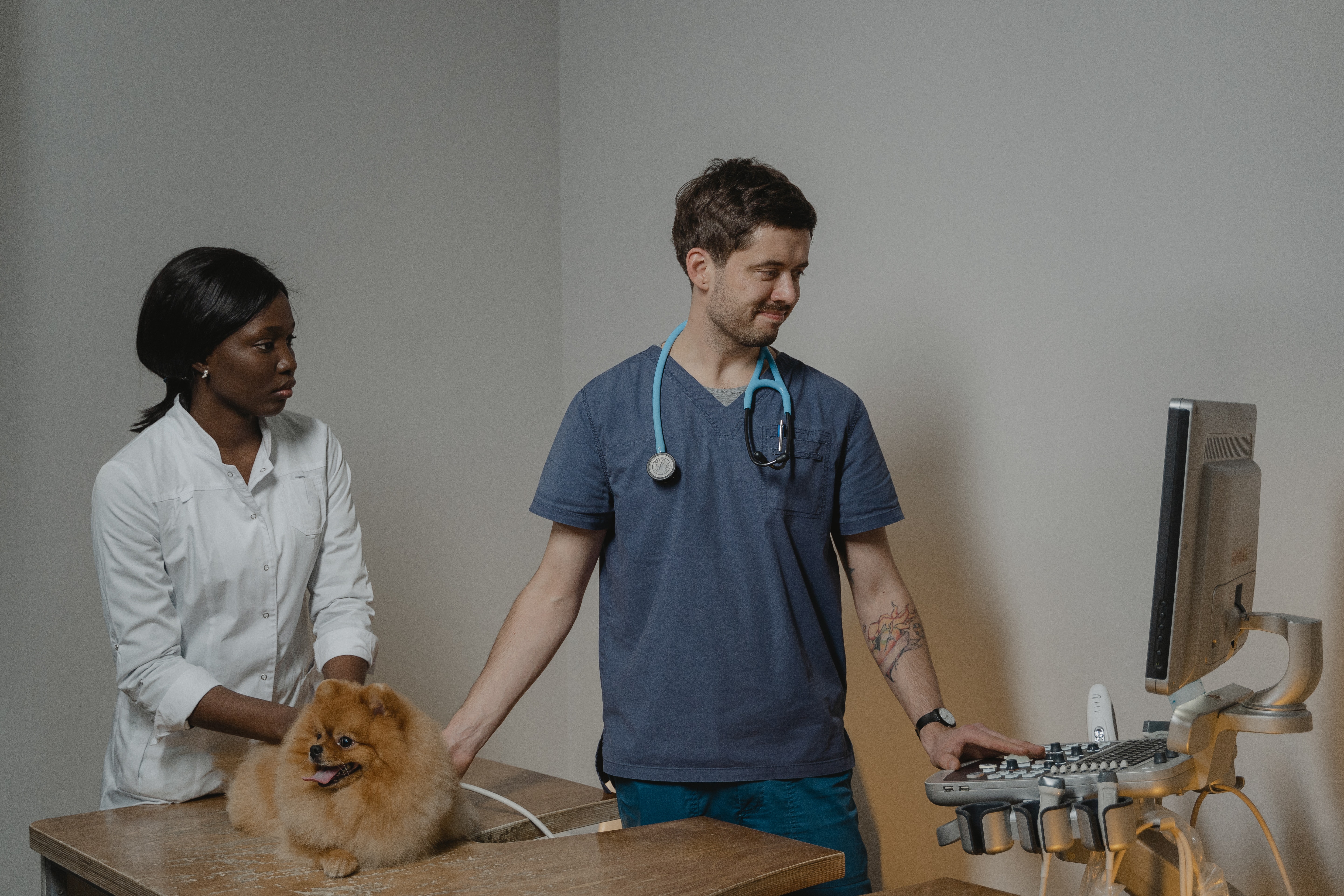When it comes to the health and wellbeing of our beloved pets, diagnostic tools like veterinary X-rays are essential for identifying injuries or illnesses. But how much should you expect to pay for a pet X-ray? In this blog post, we will explore factors that influence the cost of dog and cat X-rays, such as injury type, location, and additional services required.
Pet X-rays allow your veterinarian to inspect the animal’s interior body and inspect them for signs of illnesses, issues, physical defects, and more. By passing low levels of radiation through parts of your pet’s body, your veterinarian can find issues in their denser tissue. Veterinarians look for abnormal signs in your pet’s dental, abdominal, and chest areas.
We’ll also discuss different types of veterinary X-rays available for various situations. With costs ranging from $75 to $500 for dogs and between $100 to $267 for cats, understanding these expenses can help pet owners make informed decisions about their furry friend’s healthcare needs.
Key Takeaways
Table of Contents
- The cost of veterinary X – rays for cats and dogs can range from $75 to $500, depending on factors such as injury type, location, animal size, and additional services required like sedation or anesthesia fees.
- Some pet insurance plans cover veterinary X – ray costs, so it’s important to check before booking an appointment or discussing prices with your veterinarian.
- Additional services such as sedation or anesthesia may be necessary for some pets during the X-ray process – these services can significantly increase the overall cost of vet diagnostics by $50-$350 per session.
- Different types of veterinary X-rays are available specific to your pet’s needs; Dental x rays can help detect underlying tooth root infections while chest x-rays aid in diagnosing respiratory issues. Abdominal scans identify organ abnormalities whereas spinal x rays help detect spinal cord injuries or degenerative conditions needed for further examination and treatment.
Importance Of Veterinary X-Rays
Veterinary X-rays play a crucial role in diagnosing and treating various health issues that affect our beloved pets. These diagnostic imaging techniques provide veterinarians with detailed visuals of the animal’s internal structures, such as bones, organs, and tissues.
For instance, if a dog suffers from persistent vomiting or sudden weight loss, an abdominal X-ray might reveal something like obstructions in their gastrointestinal tract or signs of cancerous growths.
Similarly, for cats experiencing dental pain, dental X-rays can help diagnose tooth decay and gum disease early before they lead to more severe complications.
Veterinary X-rays not only help improve our pets’ quality of life but also save us money in the long run by enabling prompt diagnosis and treatment.
Furthermore, many clinics have shifted to digital technology allowing faster image processing while reducing radiation exposure for both patients and staff members alike.
Factors Affecting Veterinary X-Ray Costs
The cost of veterinary X-rays can be influenced by several factors such as injury location, animal type, geographic location, and additional services required like sedation or anesthesia fees.
Injury
Injuries in pets can significantly impact the overall cost of vet X-rays. Depending on the severity and location of an injury, veterinarians may need to take multiple X-ray images to thoroughly examine the affected area, which ultimately leads to higher costs for pet owners.

The type and complexity of an injury also influence whether additional treatments or services are required during the examination process. In cases where a pet is experiencing extreme pain or discomfort – particularly when dealing with spinal injuries – sedation or anesthesia may be necessary for immobilization purposes while performing the imaging exam.
Type Of Animal
The type of animal being treated plays a significant role in determining the cost of veterinary X-rays. For instance, dog X-ray costs typically range from $75 to $500, with an average falling between $150 and $250.
On the other hand, cat X-ray costs tend to be slightly lower, although still subject to factors such as location and clinic fees.
Costs can vary further when considering other types of pets beyond cats and dogs. Exotic animals such as birds, reptiles, or small mammals may have specialized veterinary needs that could influence pricing.
For example, avian X-rays are often more intricate than those for mammalian pets due to their unique skeletal structures and delicate respiratory systems, which sometimes necessitates additional imaging or specialty consultations.
Dogs
Dogs are such incredible companions, bringing us so much joy and love. They’re like cherished members of our families, and their health is something we deeply care about. When our furry friends aren’t feeling well, veterinarians often use X-rays to figure out what’s going on inside their bodies. But how much does it cost? Well, it depends on a few things. The size of the dog, how many X-rays are needed, where you live, and any additional services required can all affect the price.
On average, a basic X-ray for a dog can range from $100 to $300. However, if it’s a more complicated case or specialized X-rays are necessary, the cost can be higher. It’s best to talk to your trusted veterinarian who can give you an accurate estimate based on your dog’s specific needs.
Cats
Cats are among the most inquisitive and curious creatures out there, which is why they often find themselves involved in accidents or sustaining injuries. As a result, it may be necessary to perform an X-ray on your feline friend for diagnostic imaging purposes.
The cost of cat X-rays varies depending on several factors, such as geographic location and injury severity. Generally, cat X-rays can range anywhere from $100-$400 without a radiologist’s reading of the scans.
On average, however, cats’ X-rays are less expensive than dogs’ because of their smaller size – costing roughly between $100-$250.
Remember that while cost is undoubtedly essential when taking care of your animal companions’ health needs- getting them prompt medical attention should always take precedence over monetary limitations.
Geographic Location
The cost for vet X-rays can also vary depending on the location. Residents of larger cities with higher living costs usually pay more for vet visits compared to those who live in smaller communities or rural areas.
For example, a dog owner in New York City could expect to pay anywhere from $200-$500 for an X-ray, while a similar procedure might only cost around $100-$300 in a smaller city like Indianapolis.
It’s important to keep this factor in mind when budgeting for pet care expenses and always do research before deciding on a vet clinic or hospital.
Clinic Or Hospital Fees
The clinic or hospital where you take your pet for x-rays can also significantly affect the final cost. A larger and more specialized animal hospital may have higher fees than a small vet clinic, but they might offer additional services such as MRI scans, which are more expensive to conduct.
For example, while basic diagnostic x-rays usually cost between $75 and $250, they can cost up to $400 depending on the location of the injury/illness. It is essential to compare prices at different veterinary hospitals in your area before settling on one.
Additional Services Required (Sedation Or Anesthesia Fees)
In some cases, additional services such as sedation or anesthesia may be required for a pet to undergo an X-ray. These services can significantly increase the cost of veterinary X-rays.
For instance, if your furry friend is anxious and uncomfortable with the procedure, they may require sedatives to keep them calm and still during the process.
Similarly, anesthesia might be necessary in some situations where pets tend to resist being held still for radiography examinations – especially when chest x-rays are involved.
Anesthesia fees usually range from $150-$350 per hour, contributing considerably to overall costs of vet diagnostics.
Types Of Veterinary X-Ray
There are four main types of veterinary X-rays, including dental X-rays to assess teeth and jaw health, chest X-rays to diagnose respiratory issues, abdominal X-rays for gastrointestinal problems or organ abnormalities, and spinal X-rays to identify spinal cord injuries or degenerative conditions.
Dental X-Rays
Dental X-rays are becoming increasingly popular in veterinary medicine. These types of X-rays allow veterinarians to identify dental problems that may not be visible during a physical exam.

Dental X-rays can also help detect underlying tooth root infections, bone damage, and tumors in the mouth or jaw. The cost of dental X-rays will vary based on the clinic or hospital fees and additional services required for sedation or anesthesia fees if necessary.
Overall, it is important for pet owners to understand that while veterinary X-ray costs can be expensive, they play an essential role in diagnosing and treating health issues in pets.
Pet insurance may be able to help offset some of these costs.
Chest X-Rays
Chest X-rays are one of the most common types of veterinary X-rays performed on pets. They can help veterinarians diagnose respiratory problems, such as pneumonia, asthma, or tumors in the lungs.
The cost of a chest X-ray typically falls between $75 to $250 depending on location and additional services.
In some cases, multiple chest X-rays may be necessary over time to monitor the progress of an illness or injury. For example, dogs with heart disease may need regular chest X-rays to evaluate the size and function of their heart.
With pet insurance often covering medical costs including vet x rays it’s always advised you check your policy entitlements prior to attending any appointments.
Abdominal X-Rays
Abdominal X-Rays are commonly used by veterinarians to diagnose conditions such as gastrointestinal problems, bladder stones, and tumors. The cost of an abdominal X-ray for pets depends on the clinic or hospital fees and additional services required.
It’s important to note that the price of an abdominal X-ray can fluctuate based on factors such as geographic location, type of animal, and any sedation or anesthesia fees needed.
Therefore, it’s best to consult with your veterinarian about what costs you can expect for your pet’s specific needs before scheduling the procedure.
Spinal X-Rays
Spinal X-rays are an important diagnostic tool for veterinarians in identifying issues with a pet’s spine. Some common reasons a veterinarian may recommend spinal x-rays include back pain, stiffness, or weakness in the legs.
The cost of one x-ray for a dog’s spine can range from $40 to $125, with additional x-rays costing between $20 and $75 each. While this may seem expensive, early detection and treatment of spinal problems can save pet owners money in the long run by preventing more serious health complications down the line.
X-rays are an integral part of assuring the health and wellbeing of your pets. If you’re looking for some Pet Radiology Services in Paoli or Pet Dentistry Services in Paoli, don’t hesitate to book an appointment.








